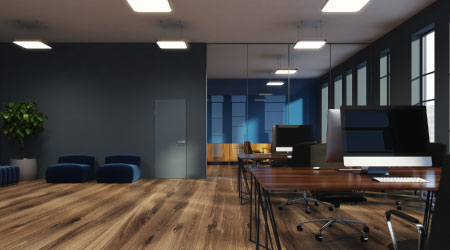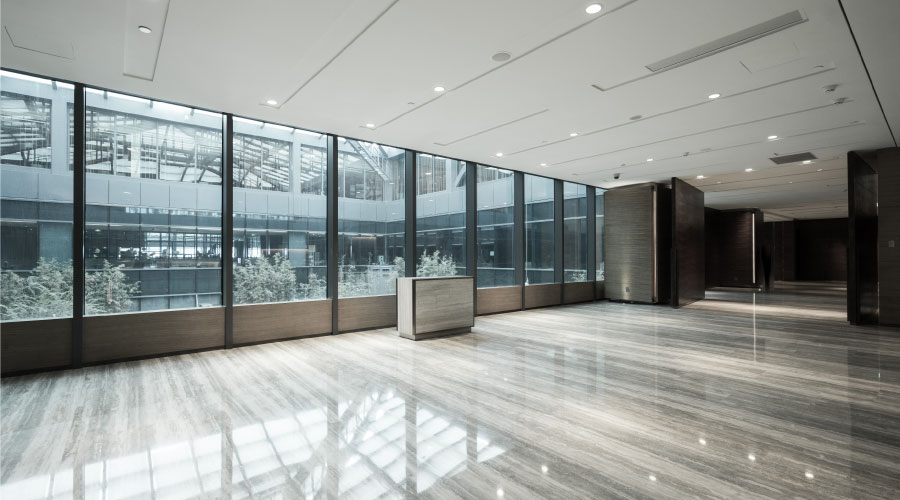Mixing Resilient Floor Products
Barnes and her colleagues used a combination of flooring products when designing a facility for the Defense Information Systems Agency (DISA). Because DISA will own the building and plans to remain in it for a long time, life-cycle costs took on greater prominence than they might have in a space that would be leased to a tenant for just five to seven years. "Longevity is a big concern," Barnes says. Ease of maintenance also was key, she adds.
Given its durability and the color options available, linoleum was chosen for many of the corridors. Rubber, with its absorbency and cushioning qualities, was picked for the fitness center. However, rather than sheet rubber, Barnes chose rubber tiles. The tiles offer greater rigidity, so equipment can easily roll through the space. They also allow access underneath the floor.
Suspended wood flooring was used in the aerobics area. Between the subfloor and flooring, the designers were able to install padding that both absorbs sound and offers some cushioning.
The lobbies were done in terrazzo.
As this project highlights, given the range of facilities and varying ways in which they're used, it's clear that "there is no magic product" when it comes to hard-surface flooring, Dates says. Instead, facility managers need to determine the facility's needs and identify the flooring product or products that will best meet them.
Karen Kroll, a contributing editor for Building Operating Management, has written extensively about real estate and facility issues.
Related Topics:
















